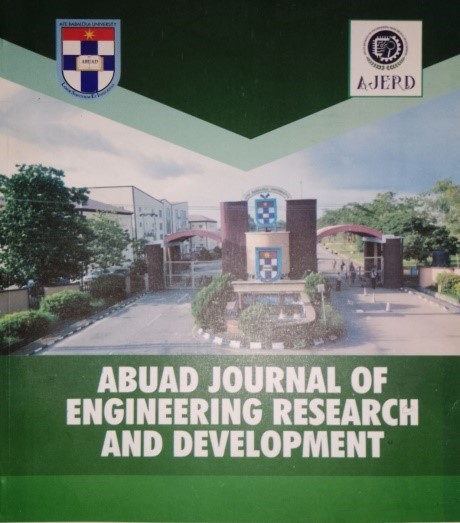Development of an IoT Based Water Quality Monitoring Device for Domestic Fish Ponds
Main Article Content
Abstract
This study focuses on developing an affordable IoT-based water quality monitoring system for domestic fish ponds. The system aims to enable remote monitoring of critical water parameters, offering real-time data access through mobile or web interfaces. It includes an alert system to notify the pond owners of any significant changes in water quality, allowing swift corrective action. The initiative stems from challenges faced by aquaculture farmers due to insufficient knowledge about water pH levels. Understanding pH's importance, especially within the optimal range of 6.5-9.0 for fish culture, is crucial for success. Tests conducted on the system's performance in detecting various pH levels across different pond environments demonstrated its reliability in identifying low and normal pH levels. However, anomalies were observed in detecting higher pH levels, indicating potential sensitivity limitations that need further investigation for system refinement. While the system excelled in detecting low and normal pH levels accurately, improvements are required for detecting higher pH thresholds to ensure comprehensive monitoring across diverse water conditions. This enhancement is crucial for effective fish pond management and reducing losses for aquaculture farmers.
Downloads
Article Details
References
Shareef, Z & Reddy, S.R.N. (2019). Design and wireless sensor Network Analysis of Water Quality Monitoring System for Aquaculture. In Proceedings of the International Conference on Computing Methodologies and Communication, Erode, India, 3(4), 405-408. DOI: https://doi.org/10.1109/ICCMC.2019.8819844
Lee, P. G. (1998). The use of process control software for the monitoring and control of aquaculture systems. In Proceedings of the Second International Conference on Recirculating Aquaculture, Roanoke, VA, USA, 48–58.
World Health Organization. (2004). Health risks from drinking demineralized water, WHO. retrieved from http://www.water-research.net/index.php/ph-in-the-environment.
Dirisu, C. G., Mafiana, M. O. & Dirisu, G. B. (2016). Level of pH In Drinking Water of an Oil and Gas Producing Community and Perceived Biological and Health Implications. European Journal of Basic and Applied Sciences 3(3), 53-60.
Federal Ministry of Agriculture and Rural Development. (2008). Nigeria National Aquaculture Strategy.
Lin, J. Y., Tsai, H. L. & Lyu, W. H. (2021). An Integrated Wireless Multi-Sensor System for Monitoring the Water Quality of Aquaculture. Sensors. 1(2), 179-188. DOI: https://doi.org/10.3390/s21248179
Water Research Net. (2016). pH in the Environment (Acccessed 3rd June 2016) retrieved from: http://www.water-research.net/index.php/ph-in-the-environment.
Ya’acob, N., Dzulkefli, N. N. S. N., Yusof, A. L., Kassim, M., Naim, N. F., & Aris, S. S. M. (2021). Water Quality Monitoring System for Fisheries using Internet of Things (IoT). IOP Conf. Series: Materials Science and Engineering, 1176(1), 012016. https://doi.org/10.1088/1757-899X/1176/1/012016 DOI: https://doi.org/10.1088/1757-899X/1176/1/012016
Chen, C.-H., Wu, Y.-C., Zhang, J.-X., & Chen, Y.-H. (2022). IoT-Based Fish Farm Water Quality Monitoring System. Sensors, 22(17), 6700. https://doi.org/10.3390/s22176700 DOI: https://doi.org/10.3390/s22176700
Adianda, S. A., Arinie, F., & Imammuddien, A. M. (2022). Telemonitoring of Water Quality for Koi Fish Hatchery Using Mechanical Turbine Method Based on Microcontroller. Journal of Applied Research and Technology, 12(2), 307. https://doi.org/10.33795/jartel.v12i2.307 DOI: https://doi.org/10.33795/jartel.v12i2.307




